 W
WAlsodes barrioi, the Cabreria spiny-chest frog, is a species of frog in the Alsodidae, endemic to Chile; it is only known from its type locality in the Cordillera de Nahuelbuta, Malleco Province. The specific name barrioi honors Avelino Barrio, a Spanish botanist and zoologist who lived in Argentina.
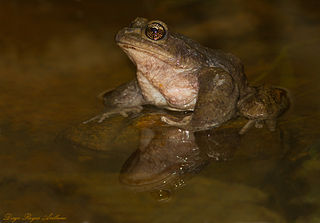 W
WAlsodes nodosus is a species of frog in the family Alsodidae endemic to central Chile; records from Argentina are not considered valid.
 W
WAlsodes valdiviensis is a species of frogs in the family Alsodidae. It is endemic to Chile and only known from its type locality, Cerro Mirador in the Cordillera Pelada, Valdivia Province. The specific name refers to this province.
 W
WBennett's chinchilla rat is a species of chinchilla rat in the family Abrocomidae. It is found only in Chile where its habitat is Mediterranean-type scrub on the western side of the Andes. The IUCN has assessed its conservation status as being of "least concern".
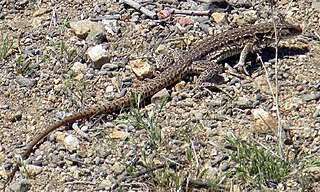 W
WCallopistes maculatus, also known as the dwarf tegu, chilean dwarf tegu, spotted false monitor o chilean iguana, is a species of lizard in the family Teiidae. It is endemic to Chile.
 W
WCalyptocephalella is a genus of frogs in the family Calyptocephalellidae. It is represented by a single living species, Calyptocephalella gayi, commonly known as the helmeted water toad, Chilean helmeted bull frog or wide-mouth toad. Additionally, there are a few extinct species that only are known from Late Cretaceous and Paleogene fossil remains from Patagonia in South America and in the Antarctic Peninsula. The helmeted water toad living today is aquatic to semi-aquatic, and found in deep ponds and reservoirs in central Chile and possibly adjacent west-central Argentina.
 W
WThe Calyptocephalellidae are a family of toads found in Chile containing two living genera, Calyptocephalella and Telmatobufo, as well as a prehistoric, extinct member classified as Calyptocephalellidae indet. The genus Calyptocephalella contains one living species, the helmeted water toad, which is a very large and mostly aquatic. The genus Telmatobufo contains four species, T. australis, T. bullocki, T. ignotus, and T. venustus. All five living species within the family are considered threatened, with T. bullocki and T. venustus being classified as critically endangered.
 W
WChedra delector is a tiny moth placed in the family Batrachedridae. The Global Lepidoptera Names Index of the Natural History Museum in London classifies it in the family Coleophoridae based on the old classification given by Ron Hodges in the 1983 Check List of the Lepidoptera of America North of Mexico. It is found in Chile. The holotype was collected by D. Bullock on 30 January 1941 at Angol, in the Malleco Province, central Chile, and is kept at the Department of Entomology of the National Museum of Natural History of the Smithsonian Institution. The species was described by Ron Hodges in 1966. The caterpillars feed upon the seeds of Cyperaceae.
 W
WThe Chile Darwin's frog, also called the northern Darwin's frog, is one of only two members of the family Rhinodermatidae. It is endemic to central Chile, although it might well be extinct.
 W
WChorus giganteus is a species of sea snail in the family Muricidae. It is endemic to the coast of Chile, where it occurs from Antofagasta (23° S) to the south of the country at depths of 8–30 metres (26–98 ft). It is a benthic predator that lives on rocks in temperate waters. It has been overexploited by local fishermen in much of its range.
 W
W(Phyllotis darwini) is a species of rodent in the family Cricetidae.
 W
WDiplomystes nahuelbutaensis is a species of velvet catfish endemic to Chile where it occurs in the Bío-Bío River basin and in the Loncomilla River. It grows to a length of 26.0 centimetres (10.2 in) TL and is a component of local commercial fisheries as well as being a gamefish.
 W
WEupsophus migueli is a species of frog in the family Alsodidae. It is endemic to Chile. Its natural habitats are temperate forest and intermittent freshwater marshes. It is threatened by habitat loss.
 W
WEupsophus roseus, the rosy ground frog, is a species of frog in the family Alsodidae. It is endemic to Chile. Its natural habitats are temperate forest, rivers, swampland, and intermittent freshwater marshes. It is threatened by habitat loss.
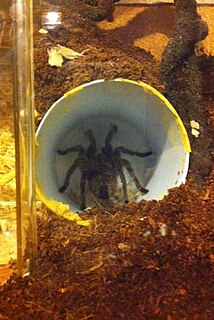 W
WGrammostola porteri, also known as the common Rose hair tarantula or Chilean tarantula, is a frequently encountered species in the modern keeping hobby. Gramostola porteri are considered mostly docile but individuality and temperament between specimens varies greatly based off of an array of factors. This species gains much of its notoriety from its large size and low maintenance, while also being relatively inexpensive. This animal was one of the first introduced arachnids in the wildlife trade so they are popular as pets. This tarantula is endemic to Chile.
 W
WHelicoverpa atacamae, the Chilean corn earworm, is a moth of the family Noctuidae.
 W
WHellinsia betsiae is a moth of the family Pterophoridae that is found in Chile.
 W
WInsuetophrynus is a monotypic genus of frogs in the family Rhinodermatidae. The sole species is Insuetophrynus acarpicus, also known as Barrio's frog. It is endemic to Chile and only known from few localities on the Valdivian Coast Range between Chanchán in the Los Ríos Region in the south and Queule and Colequal Alto in the north; the fourth locality is Mehuín, which is the type locality. The altitudinal range is 50–486 m (164–1,594 ft) asl.
 W
WLiolaemus atacamensis is a species of lizard in the family Iguanidae. It is endemic to Chile, with occurrence noted in the Chilean matorral.
 W
WLiolaemus cyanogaster is a species of lizard in the family Iguanidae. It is endemic to Chile, being abundant between Concepción and Puerto Montt.
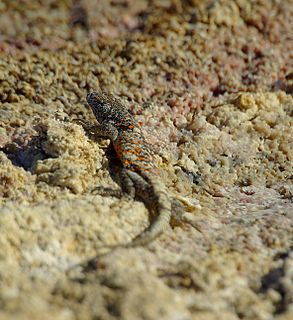 W
WLiolaemus fabiani, commonly known as Yanez's tree iguana and Fabian's lizard, is a species of lizard in the genus Liolaemus in the family Liolaemidae.
 W
WLiolaemus nigriceps is a species of lizard in the family Iguanidae. It is endemic to the Atacama in Chile, and grows to roughly 2.5 inches (6.25 cm) long.
 W
WLiolaemus nigromaculatus is a species of tree iguana endemic to the Chilean matorral ecoregion within Chile. The species was first described in 1834, by Arend Friedrich August Wiegmann and was later rediscribed in 2013 by Chilean biologists.
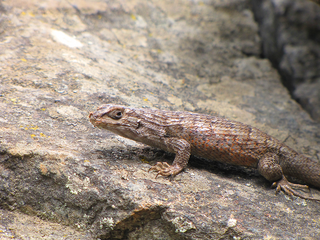 W
WLiolaemus nitidus is a species of lizard in the family Iguanidae. It is endemic to Chile, notably within the Chilean matorral ecoregion.
 W
WLiolaemus platei, known by the common name braided tree iguana, is a species of lizard in the family Liolaemidae. The species is endemic to Chile.
 W
WLiolaemus pseudolemniscatus is a species of lizard in the family Iguanidae. It is endemic to Chile, with occurrence noted in the Chilean matorral.
 W
WLiolaemus silvai is a species of lizard in the family Liolaemidae. The species is endemic to Chile, with occurrence noted in the Chilean matorral.
 W
WLiolaemus tenuis, known as the jewel lizard, is a species of lizard in the family Iguanidae. Other names are slender lizard and thin lizard. It is endemic to Chile.
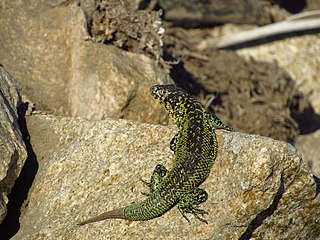 W
WLiolaemus zapallarensis is a species of lizard in the family Iguanidae. It is endemic to Chile.
 W
WMicrolophus atacamensis, the Atacamen Pacific iguana, is a species of lava lizard that is endemic to Chile.
 W
WMonetaria caputdraconis, common name the "dragon's-head cowry", is a species of sea snail, a cowry, a marine gastropod mollusk in the family Cypraeidae, the cowries.
 W
WMordacia lapicida, also known as the Chilean lamprey, is a species of southern topeyed lamprey endemic to southern Chile, where it can be found in riverine and marine habitats. This species is anadromous. This parasitic lamprey can reach a length of 54 centimetres (21 in) SL. Ammocoetes and adults of this species are found in rivers, and occur in fine sand along river banks.
 W
WNematogenys inermis is a species of mountain catfish, the only extant species in the family Nematogenyiidae. This species is endemic to Chile where it is found in fresh waters in central Chile. This species grows to a length of 40.7 cm (16.0 in) NG.
 W
WPhilodryas chamissonis, commonly known as the long-tailed snake, is a species of moderately venomous opisthoglyphous (rear-fanged) snake in the family Colubridae. The species is native to South America.
 W
WRhinella arunco is a species of toad in the family Bufonidae that is endemic to Chile. Its natural habitats are subtropical or tropical dry shrubland, rivers, intermittent rivers, freshwater marshes, intermittent freshwater marshes, water storage areas, ponds, aquaculture ponds, open excavations, and irrigated land. It is threatened by habitat loss.
 W
WRhinella atacamensis, sometimes called the Vallenar toad or Atacama toad, is a species of toad in the family Bufonidae. It is endemic to Chile and occurs between Paposo and Las Chilcas. It inhabits the desert Pacific coastal region with Mediterranean influences and is found in and near oases and streams. Breeding takes place in permanent pools, streams, and rivers. While abundant at a few sites, it has declined overall and gone locally extinct at some sites. Threats to this species include extensive droughts and water pollution as well as extraction of surface water, mining, agriculture, livestock farming, and timber plantations.
 W
WTelmatobius pefauri is a species of frog in the family Telmatobiidae. It is endemic to extreme northern Chile. It was already feared that this species is extinct, but recent research has suggested that the species is extant at several localities in the Arica y Parinacota Region, albeit at low numbers. Furthermore, morphological and genetic data suggest that Telmatobius zapahuirensis is a synonym of Telmatobius pefauri. Common name Arico water frog has been coined for this species.
 W
WTelmatobufo bullocki is a species of frog in the family Calyptocephalellidae. It is endemic to Chile, and is only known from a few locations in the Cordillera de Nahuelbuta, a part of the Chilean Coast Range. It is extremely rare; extensive fieldwork in 1992–2002 turned up only a single adult. It occurs in fast-flowing streams in temperate Nothofagus forest. The tadpoles are free-swimming and feed on algae growing on submerged rocks. It is threatened by siltation of streams caused by clear-cutting. It occurs within the Nahuelbuta National Park.
 W
WTelmatobufo venustus is a species of frog in the family Calyptocephalellidae. It is endemic to Chile and occurs on the western slopes of the Andes in Maule and Bío Bío Regions. Its natural habitats are streams in temperate Nothofagus forests where it is found under rocks along the streams. The only stable population is in the Altos de Lircay National Reserve in Maule. The only other localities, both in the Bío Bío Region, are its type locality in Chillan, where it was not found in 2014, and Ralco where it was last observed in 1981. It is threatened by habitat loss caused by fires, conversion of native habitat to pine and eucalyptus plantations, and in Ralco, hydropower dams. Trout in Altos de Lircay are also a threat.